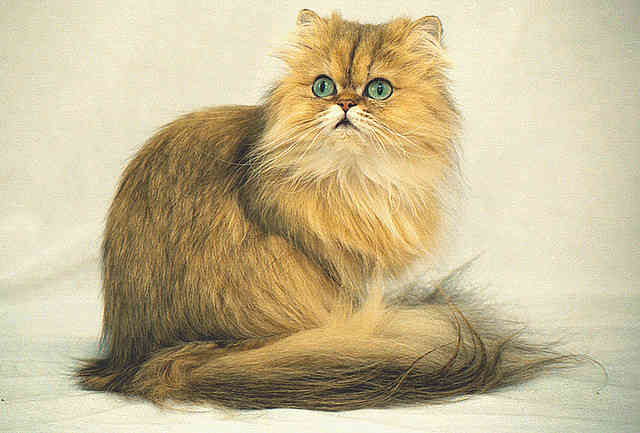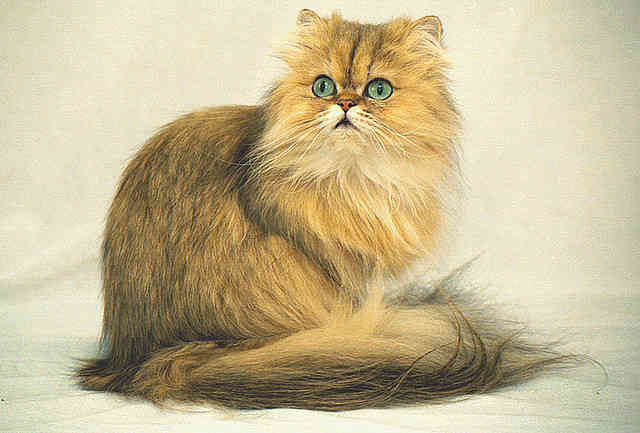Imagine yourself in the presence of a majestic golden Persian cat. Its luxurious coat shimmers in the sunlight, and its striking amber eyes captivate your attention. As you observe its serene and regal demeanor, you can’t help but be drawn into the enchanting world of these captivating felines. In this article, we will explore the allure and beauty of golden Persian cats, discussing their history, unique characteristics, and how to care for these exquisite creatures. So, sit back, relax, and prepare to embark on a journey into the captivating realm of these magnificent creatures.
Appearance
Coat color
Golden Persian cats have a beautiful and regal coat color. The most common coat color for this breed is a rich golden shade, which is where they get their name. However, they can also come in variations such as cream, red, silver, and blue. Their coat is long and fluffy, adding to their luxurious appearance.
Facial features
One of the most striking features of a Golden Persian cat is their distinct flat face. They have a round and broad skull, coupled with big round eyes and a small, upturned nose. Their eyes are usually copper or green in color, which adds to their captivating and expressive facial expressions. These unique facial features give them an adorable and charming appearance.
Body structure
Golden Persian cats have a robust and sturdy body structure. They have a medium to large size with a stocky build. Their legs are short and strong, supporting their well-rounded bodies. When you see a Golden Persian cat, you will notice their elegant posture and graceful movements, which exude a sense of confidence and poise.
Size
In terms of size, Golden Persian cats are considered to be medium to large-sized cats. Adult males typically weigh between 10 to 12 pounds, while adult females usually weigh between 8 to 10 pounds. Their size, coupled with their long and fluffy coat, gives them a majestic presence that is sure to capture anyone’s attention.
History
Origin
The Golden Persian cat is believed to have originated in the Middle East, specifically in Persia (present-day Iran). They were highly prized and revered by Persian nobility and aristocracy. Their regal appearance and luxurious coat made them symbols of wealth and prestige. Over time, they were introduced to various parts of the world, gaining popularity as one of the most sought-after cat breeds.
Breed development
The development of the Golden Persian breed can be attributed to selective breeding practices. Breeders aimed to enhance and refine the Golden Persian cat’s physical features, such as their distinct flat face and long, flowing coat. Through careful breeding, these characteristics became more prominent, solidifying the breed’s iconic look. Today, Golden Persian cats continue to be cherished and admired for their beauty and elegance.
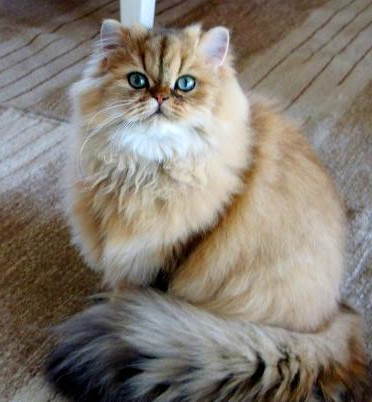
Temperament
Personality traits
Golden Persian cats are known for their gentle and calm nature. They have a serene disposition and are often described as being regal and dignified. They prefer a peaceful and quiet environment, where they can relax and observe their surroundings. Golden Persians are not as active or playful as some other cat breeds, but they make up for it with their affectionate and loving behavior towards their human companions.
Social behavior
Golden Persian cats tend to be reserved and may take some time to warm up to new people or environments. However, once they establish a bond with their owners, they become incredibly loyal and devoted. They enjoy being in the presence of their loved ones and can often be found perched on a lap or nearby seeking gentle affection. Golden Persians are not typically known to be demanding or clingy but rather prefer a balanced level of interaction and personal space.
Interaction with children
Golden Persian cats are generally tolerant and patient with children, making them suitable companions for families. However, it is always important to supervise interactions between children and cats to ensure the well-being of both parties. Teaching children to handle and respect the cat’s boundaries is crucial to fostering a harmonious relationship. With the proper introduction and gentle handling, Golden Persians can become loving and protective members of the family.
Compatibility with other pets
Golden Persian cats have a calm and non-confrontational nature, which often makes them compatible with other pets in the household. They may initially be cautious when introduced to new animals but, with time, they can adapt and become friendly companions. The key to successful cohabitation is gradual and supervised introductions, along with providing each pet with their own space and resources to prevent territorial disputes.
Grooming
Coat care
Golden Persian cats have a stunning long and fluffy coat that requires regular grooming to keep it in optimal condition. Daily brushing is recommended to prevent matting and tangles. A wide-toothed comb or a slicker brush can be used to gently remove any knots or debris from their fur. It is important to be gentle and patient during grooming sessions to avoid causing any discomfort or stress to the cat.
Bathing
While frequent bathing is not necessary for Golden Persian cats, occasional baths can help keep their coat clean and maintain its lustrous appearance. It is essential to use a cat-specific shampoo that is gentle on their skin and coat. Prior to bathing, it is advisable to comb through their fur to remove any tangles or mats. During the bathing process, it is important to handle the cat with care and ensure their safety by choosing a suitable bathing area.
Nail trimming
Regular nail trimming is important for the health and comfort of Golden Persian cats. Their nails can become long and sharp, which can cause discomfort and potential injury. Special cat nail clippers or human nail clippers with a straight edge can be used to trim their nails. It is crucial to exercise caution and avoid cutting the quick, as this can cause bleeding and pain. If unsure, it is best to consult a veterinarian or a professional groomer for guidance.
Ear cleaning
Golden Persian cats are prone to wax buildup and ear infections, making regular ear cleaning an essential part of their grooming routine. A veterinarian-approved ear cleaning solution can be used, along with cotton balls or pads, to gently remove any dirt or excess wax from their ears. It is important to be gentle and avoid inserting anything too deep into the ear canal to prevent injury. If there are any signs of redness, swelling, or discharge, a veterinarian should be consulted.
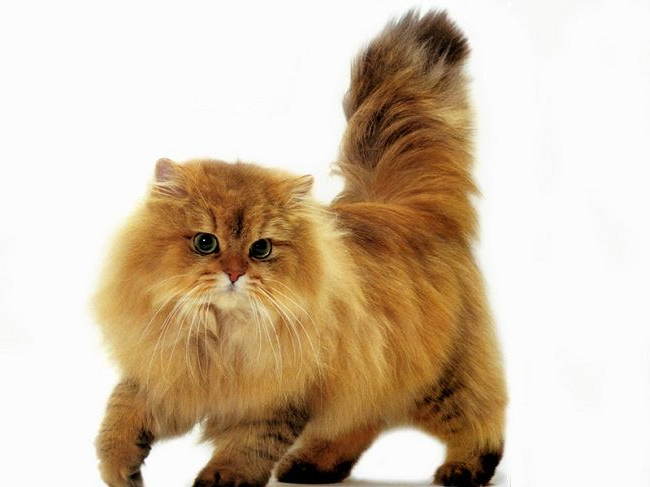
Health
Common health issues
Golden Persian cats, like all purebred cats, are prone to certain health issues. Some common health concerns that can affect this breed include:
-
Polycystic Kidney Disease (PKD): This is an inherited condition that causes the formation of cysts in the kidneys, potentially leading to kidney failure.
-
Respiratory issues: The facial structure of Golden Persian cats, specifically their flat faces, can result in respiratory problems such as snoring, wheezing, and difficulty breathing.
-
Eye conditions: Due to their prominent eyes, Golden Persians are susceptible to eye conditions such as cherry eye, entropion, and tear duct abnormalities.
-
Dental issues: The shape of their skull can contribute to dental problems such as overcrowding, misalignment, and an increased risk of periodontal disease.
Genetic predispositions
Golden Persian cats are genetically predisposed to certain health conditions, as mentioned earlier. It is important for potential owners to be aware of these predispositions and to obtain their cat from reputable breeders who actively screen and test their breeding stock for these conditions. Genetic testing and regular veterinary check-ups can help identify and manage any potential health concerns.
Care and prevention
To care for a Golden Persian cat’s health, it is important to provide them with a balanced diet, regular exercise, and a clean and stress-free environment. Avoiding exposure to potential respiratory irritants and practicing proper dental hygiene can also help prevent health issues. Additionally, providing regular grooming, including ear cleaning and nail trimming, can help maintain overall health and well-being.
Regular vet check-ups
Regular veterinary check-ups are essential for maintaining the health and longevity of Golden Persian cats. Routine examinations can help identify and address any underlying health concerns at an early stage. Vaccinations, parasite prevention, and dental cleanings should be included in their veterinary care regimen. Additionally, annual bloodwork and screenings for common genetic conditions can help monitor their overall health and detect any abnormalities.
Feeding
Nutritional needs
Golden Persian cats have specific nutritional needs to support their overall health and maintain their coat’s luster. A balanced and high-quality cat food formulated for long-haired breeds is recommended. These foods often contain ingredients that promote coat health, such as essential fatty acids and antioxidants. It is important to consult with a veterinarian to determine the appropriate portion sizes and feeding frequency for your specific cat.
Dry food vs wet food
When it comes to choosing between dry food and wet food for Golden Persian cats, both options have their advantages. Dry cat food helps promote dental health and can be left out for self-feeding. Wet cat food provides additional moisture, which is beneficial for urinary tract health and can be more enticing for cats with finicky appetites. A combination of both dry and wet food can help meet their nutritional needs and cater to their preferences.
Feeding schedule
Establishing a consistent feeding schedule is important for Golden Persian cats. Divide their daily food portions into multiple small meals throughout the day to prevent overeating and weight gain. This also mimics their natural feeding habits in the wild. Avoid free-feeding or leaving food out all the time, as it can lead to obesity and overeating.
Treats and snacks
Treats and snacks can be given to Golden Persian cats as an occasional indulgence or as a reward during training sessions. However, it is crucial to avoid overfeeding or relying too heavily on treats, as it can lead to weight gain and nutritional imbalances. Opt for cat-specific treats that are low in calories and made with high-quality ingredients. Always consider the overall calorie intake from treats when calculating their daily food portions.
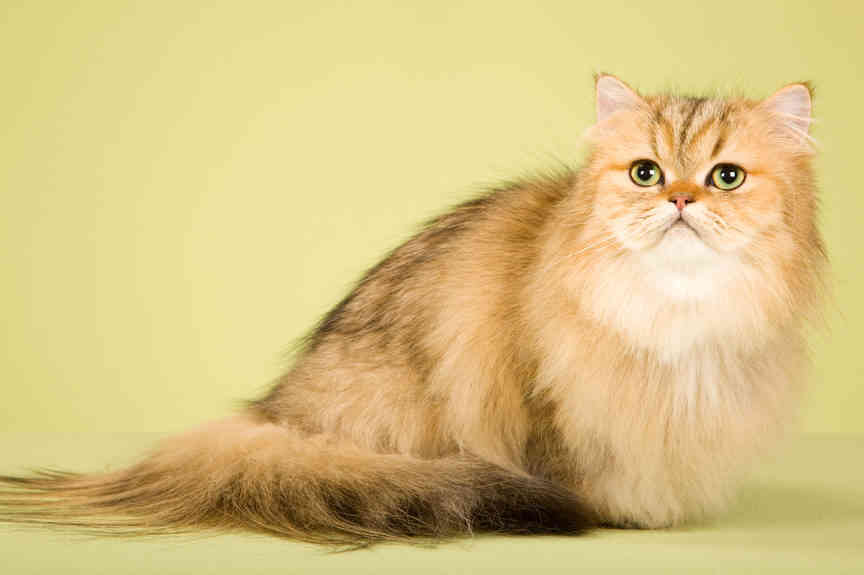
Training
Litter box training
Litter box training is an essential part of owning a Golden Persian cat. Start training them by providing a clean litter box in a quiet and accessible location. Show them where the litter box is and gently place them in it after meals or naps. Cats are naturally inclined to use litter boxes, but accidents can happen during the training process. If accidents occur, clean the area thoroughly and avoid scolding or punishing the cat, as it may deter them from using the litter box altogether.
Behavioral training
Golden Persian cats are generally well-mannered and have a calm temperament. However, behavioral training can help address specific issues or encourage desirable behaviors. Positive reinforcement techniques, such as rewards and praise, work well with this breed. Reward good behavior and redirect unwanted behavior by using treats or toys. Consistency and patience are key when training a Golden Persian cat.
Teaching commands
While Golden Persian cats are not as eager to learn commands as some other breeds, they can still be taught basic commands with patience and positive reinforcement. Start with simple commands like “sit” or “come” and use treats as rewards. Establish a routine and practice commands in a quiet and distraction-free environment. Remember to keep training sessions short and enjoyable for the cat to maintain their interest and cooperation.
Positive reinforcement
Golden Persian cats respond well to positive reinforcement training methods. Rewarding good behavior with treats, praise, or playtime can effectively reinforce their training. Avoid using punishment or forceful methods, as it can cause fear or resentment in this sensitive breed. By consistently rewarding and praising desired behaviors, you can encourage a strong bond and a willingness to learn in your Golden Persian cat.
Exercise
Exercise requirements
Golden Persian cats are not known for their high energy levels or athleticism. However, regular exercise is still important to prevent obesity and maintain their overall health. Engage them in interactive play sessions using toys that stimulate their natural hunting instincts. Short bursts of playtime, complemented by climbing structures or scratching posts, can provide the necessary exercise and mental stimulation for Golden Persians.
Toys and playtime
Toys that encourage mental and physical engagement are ideal for Golden Persian cats. Interactive toys, such as puzzle feeders or treat-dispensing toys, can provide both mental stimulation and a source of exercise. Feather toys, stuffed mice, or laser pointers can also be used to initiate play sessions. Experiment with different types of toys to find what your Golden Persian cat enjoys the most.
Encouraging physical activity
Although Golden Persian cats may not be as naturally inclined to be active as some other breeds, there are ways to encourage physical activity. Set aside dedicated playtime each day, ensuring a safe and stimulating environment for them to explore and engage in. Use toys that encourage movement and incorporate short bursts of activity throughout the day to keep them entertained and active.
Preventing obesity
Maintaining a healthy weight is crucial for Golden Persian cats, as they are prone to obesity. Along with regular exercise, portion control and a balanced diet are key to preventing weight gain. Avoid free-feeding and follow the feeding schedule recommended by your veterinarian. Regular weigh-ins and body condition assessments can help monitor their weight and make adjustments to their diet and exercise routine if necessary.

Breeding
Selecting a mate
When considering breeding Golden Persian cats, it is essential to select a mate that complements the desired traits and characteristics of the breed. Both cats should undergo thorough health testing and genetic screenings to minimize the risk of passing on hereditary health issues to the offspring. The goal is to maintain or improve the breed’s standard and ensure the overall health and well-being of the kittens.
Reproductive considerations
Golden Persian cats require careful monitoring and assistance during the breeding process. Some females may experience difficulties during labor due to their robust body structure and long coat. They may need veterinary assistance, and it is important to ensure a clean and quiet birthing environment. Careful consideration of genetics, health, and temperament should be taken into account when deciding whether or not to breed Golden Persian cats.
Pregnancy and birth
During pregnancy, female Golden Persian cats require extra care and attention. Providing a comfortable and quiet area for nesting, along with a well-balanced diet, is important. Regular veterinarian check-ups can help monitor the progress of the pregnancy and detect any potential complications. The birthing process, known as parturition, should always be supervised by a veterinarian or an experienced breeder to ensure the well-being of both the mother and the kittens.
Caring for kittens
Once the kittens are born, they require round-the-clock care and attention from their mother. The mother cat will naturally provide care by nursing and grooming the kittens. It is crucial to provide a warm and safe environment for the kittens, along with regular veterinary check-ups to monitor their growth and overall health. As the kittens grow, they will gradually become more independent, and socialization should be a key focus to ensure they become well-rounded cats.
Showing and competitions
Standard breed guidelines
Golden Persian cats are judged according to specific breed standards when participating in shows and competitions. These standards outline the ideal physical traits and characteristics that exemplify the breed. Elements such as coat color, structure, facial features, and overall appearance are carefully evaluated by trained judges to determine the cat’s adherence to the breed standard and its suitability for exhibition.
Preparing for shows
Preparing Golden Persian cats for shows involves grooming and conditioning their coat to its optimal condition. Regular brushing and grooming sessions are essential to maintain their long and luxurious coat. Bathing, nail trimming, and ear cleaning should also be done prior to the show. Familiarize the cat with the show environment and handling to help them feel more at ease during the competition.
Judging criteria
Judges evaluate Golden Persian cats based on the breed standards, looking for qualities such as coat texture, color, body structure, and facial features. Balance, proportion, and symmetry are important considerations. The cat’s overall presence and temperament are also observed. Each cat is assessed on an individual basis, and the judges’ expertise and extensive knowledge of the breed guide them in making informed decisions.
Participating in competitions
Participating in competitions can be an exciting and rewarding experience for Golden Persian cat owners. It allows them to showcase their cat’s unique beauty and temperament. Joining breed-specific cat clubs or associations is a great way to learn more about shows and competitions. It is important to approach competitions with a focus on sportsmanship and to appreciate the experience regardless of the outcome.
By diving into the comprehensive world of Golden Persian cats, we have explored their regal appearance, their historical background, their temperament, grooming needs, health considerations, feeding requirements, training techniques, exercise recommendations, breeding insights, and the captivating world of shows and competitions. Golden Persian cats truly embody elegance and grace, making them a beloved breed among cat enthusiasts. Whether you are considering bringing one into your family or simply want to appreciate their majestic presence, Golden Persian cats have a charm that is hard to resist.
